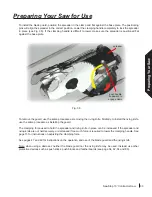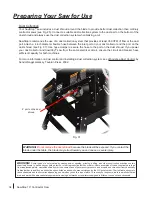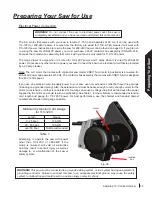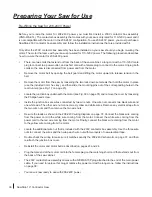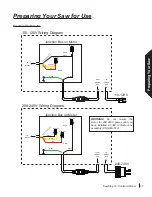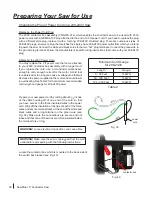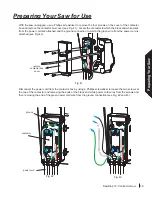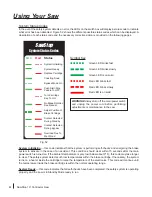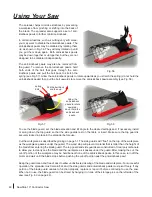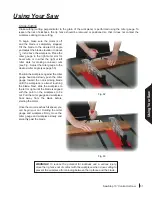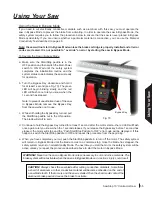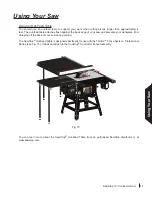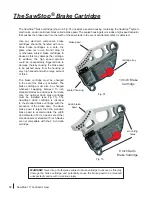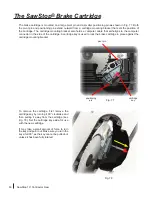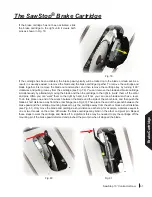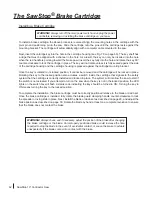
SawStop 10” Contractor Saw 47
Using Y
our
Saw
Using the Blade Guard
Using the blade guard is one of the most important steps you can take to prevent injury. Many table saw
injuries occur when the blade guard is either not being used or not being used properly. The blade guard on
your
SawStop
®
saw was designed to have a narrow profile that allows you to use the guard even when making
narrow rip cuts (see Fig. 53). As a result, there are only a few situations where the blade guard cannot be used
(e.g., dado cuts, rabbet cuts, and extremely narrow cuts).
Install the blade guard as described on
page 32. The side guards are mounted to
the top guard so that they can pivot freely
to automatically adjust to the height of the
workpiece (up to 3
1
⁄
8
inches high).
The front of the top guard is formed into a
wood stop that prevents wood that is too
high to move through the blade guard from
entering the guard (see Fig. 53).
The top guard can be placed in an upright
position so that you can change the blade
without removing the guard. Pull the top
guard forward and then up, as shown in
Fig. 54, to release it from the front of the
spreader. The top guard may then be placed
in an upright position, balanced against the
spreader, as shown in Fig. 55. Once upright,
the top guard may be removed from the
spreader by lifting it up vertically as shown
in Fig. 55. To reinstall the top guard in the
spreader, reverse the process.
WARNING!
Use the blade guard for every operation for which it can be used, including all through-
sawing. Note that since the spreader extends above the top of the blade it cannot be used as a riving
knife, even if the top guard and the anti-kickback pawls are removed, as shown in Fig.
55
and
57
).
Using Your Saw
side guards
anti-kickback
pawl
spreader
wood
stop
top guard
Lift to
remove
pull top guard forward
and then rotate up
Fig. 55
Fig. 53
Fig. 54

